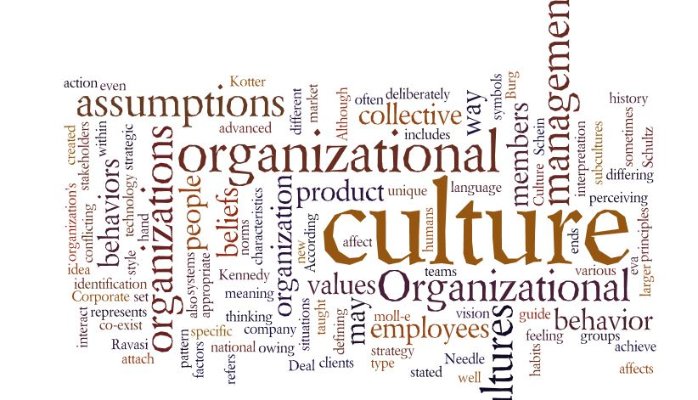The Situation: Terrence was the CEO of a midsize high-tech company. His organization had recently acquired two smaller tech start-ups, and were looking to go through a restructuring and re-design of the entire enterprise. He wanted to get a complete understanding of the current state of his company, and then chart a course for what the culture and governance structure would look like for the future.
The Intervention: When I met with Terrence he had three requests: 1) conduct an organizational culture analysis to understand the company’s current state; 2) provide recommendations for how to successfully integrate the two tech start-ups and create a new operating culture; and 3) provide guidance and counsel on what roles would need to be created under the new governance structure. We started the engagement by discussing our options for the org culture analysis. It was important to deploy an organization-wide culture survey so that all employees, both new and old, would feel that their input and perspectives were valued. We also felt it was critical to conduct stakeholder interviews with the top leaders of the company. The interviews would supplement the findings from the culture survey and provide us with a robust picture of the current state.
We selected an organization culture survey that would look at four key dimensions: a) personal leadership – consisting of core values, impact, and relationships, b) people leadership – consisting of empowerment, team effectiveness, and talent development, c) organizational leadership – consisting of vision and direction, goals and outcomes, and delivering results, and d) business leadership – consisting of customer orientation, competitive focus, and business acumen. For the culture interviews, we put together an interview protocol that would cover the company’s strengths and opportunities, its outlook for the future, what the culture has been like in the past and what it has evolved to since the acquisitions, patterns of behavior around communication and teamwork, and what good leadership should look like moving forward. It took eight weeks to complete the interviews with their top leaders and we kept the organizational survey open for the same period of time. At the end of the data collection process we had 485 employees that completed the culture survey, and 38 senior leaders that participated in the interviews.
After reviewing and aggregating the data we put together an organizational culture assessment report that was shared with the Terrence and his senior leadership team. The key culture findings were as follows. For strengths, employees felt that: a) the company’s mission created excitement and was motivating to people; b) innovation and risk taking was encouraged and rewarded by senior management; c) teamwork was the primary building blocks for completing projects and accomplishing goals; and d) employees were highly engaged in their work and believed they had a positive impact on the industry. From an opportunities standpoint, employees felt: a) that the vision and future direction for the organization was unclear; b) there was no clear management style or distinct set of management practices in place; c) there was little agreement on goals across the enterprise (leaders tended to operate in silos); d) they had poor bench strength and limited investment in developing talent; and e) they had problems with coordinating projects across the organization, especially after the acquisitions. Some of this information was not a surprise to the CEO and senior leadership team, and other parts were more shocking. It got the team to begin discussing and exploring some tough issues.
We outlined four key recommendations for the organization moving forward: 1) bringing focus, drive, and inspiration to the employee base by setting and communicating a clear enterprise strategy; 2) defining and adhering to enterprise-wide management practices around communication, execution, collaboration, decision-making, and team leadership; 3) leveraging the company’s bright and innovative workforce by taking a deliberate and systematic approach to talent development, starting with their top leaders; and 4) putting together organizational norms and values that would incorporate beliefs and leadership traits from the acquired companies. We also helped the senior leadership team think through the new company governance and leadership structure. It was going to be important to create GM roles that would serve as business unit leaders for each of the acquired companies. They also needed to revisit their current GM structure and align the leadership team members with key business priorities and objectives for the future.
The Outcome: Terrence knew the importance of organizational culture, and took action to get a better understanding of how his company was operating following several key acquisitions. He partnered with us to get a better understanding of the organization’s current state, and took our counsel and guidance on implementing specific actions to drive positive change. It was a great learning experience for both his senior leadership team, and the broader organization, as they rolled out the results and follow-up actions that would be needed to drive change. Culture and leadership go hand-and-hand. Leaders that can build a culture that impacts people on a personal, team, organization, and business level are able to drive success and sustainability over time.
For more information on organizational culture analysis and change, contact Bandelli & Associates at abandelli@bandelliassociates.com.
Leadership Matters. Without It, People Fail.


